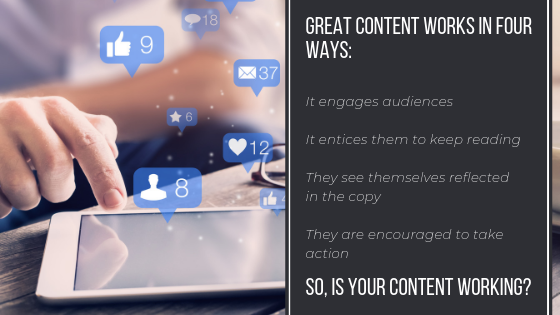Following the news this week that Marie Claire will close its print publication to focus upon its digital output, it’s made me think about how audience engagement is continuing to evolve and what people are looking for when it comes to consuming content.
I admit I’m a lapsed reader of Marie Claire – I used to have an annual subscription, but I stopped reading it regularly a few years ago for a variety of reasons. Partly because I’d lost interest in a lot of the content (although many of the articles were extremely well written), primarily due to a lack of time but also because the way that I read content has changed. I’m rarely without my phone or my tablet in my hand and that’s because I like to not only read articles online, but it’s because I enjoy reading the comments that are often left underneath.
Take websites such as the MailOnline for example. The reason why they publish so many ‘clickbaity’ articles isn’t necessarily because they believe what they are writing (at least I hope not!). It’s because they know that their audience will comment on them in their droves. They receive thousands of comments on every single article because, in today’s social media-driven world, consumers like to be actively involved in conversations.
Back in the day (I’m showing my age here) most magazines would always publish a ‘letters to the editor’ column. It was a way of allowing readers to share their views and opinions and feel that they are involved with the publication. Today, audiences expect instant gratification. The fast-paced nature of social media means that we want to not only share our opinions, but we want to see it immediately published and engaged with by fellow readers.
It’s an evolution that print magazines simply can’t keep up with.
But that doesn’t mean they shouldn’t try.
How Social Work News is improving audience engagement
As part of my role as editor of Social Work News magazine (a quarterly social work magazine), we’re juggling the balance between our print edition and our digital offering.
As a trade publication, we’re very aware that everything we print must be relevant to our social work audience, so it’s vital that we get their views and opinions across within the publication.
We listen to what our community is talking about, and we encourage all our readers to write for us. In my view, the magazine doesn’t belong to us; it belongs to our readers. That’s why we continually seek their feedback and encourage them to share their opinions which we then publish in full. For me as editor, this is important – not just because it helps to truly reflect the opinions and viewpoints of the profession, but because it provides a change in tone of voice.
Stylistically, of course, we want consistency, but we also need to make our readers feel that they are part of what they are reading. They want to recognise themselves and their peers within the articles.
The results are clear.
Each issue, our readership is increasing dramatically. We’re now getting a higher audience than ever before, and each month, I’m bombarded with emails from social workers actively wanting to get involved and write for us.
In my view, there’s clearly still a market for magazines if the reader feels adequately connected and engaged with what they are reading.
Audience engagement is everything
If everything is about audience engagement, how can we transfer this into our wider PR and marketing activities?
Simply put, it’s all about remembering who your audience is. It’s about understanding what they want and how they want it. Too many PR and marketing campaigns fail because they place the sales messages as a priority above the audiences’ needs. That’s not to say there isn’t a place for sales messages – of course, there is, but your chose of language and your tone of voice can play a big part in how your audience views those messages.

In our view, great copy is about creating content which works in four ways. It needs to engage audiences and encourage them to keep reading. It needs to allow the audience to see themselves reflected in what they are reading. But most of all, it needs to encourage them to act – whether that’s leaving a comment or sharing an online article, choosing to follow you on social media or deciding to contact you directly.

